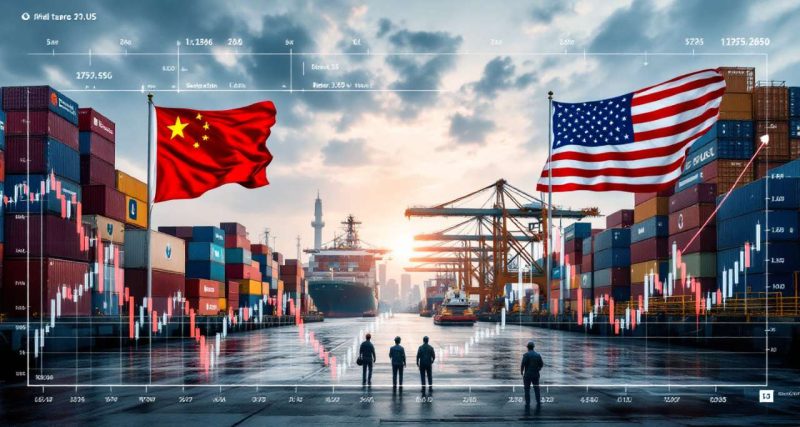In a dramatic escalation of trade tensions, the White House announced that tariffs on Chinese imports will rise to an unprecedented 104%, effective April 9, 2025. The move, confirmed by White House Press Secretary Karoline Leavitt, follows a series of retaliatory measures between the two economic superpowers, with neither side showing signs of backing down.

President Donald Trump, who has long championed aggressive trade policies, issued the directive after China imposed a 34% retaliatory tariff on U.S. goods. This latest increase adds an additional 50% to the existing tariffs, which already included a 20% baseline and a 34% “reciprocal” levy introduced earlier this week. The White House has framed the decision as a necessary response to what it describes as China’s “unfair trade practices” and “currency manipulation.”
The White House’s Justification
Speaking to reporters, Leavitt emphasized that the administration’s actions were a direct response to China’s refusal to negotiate in good faith. “When America is punched, President Trump punches back harder,” she said. “This administration will not tolerate economic aggression from any nation, and these tariffs are a clear message that the United States will defend its interests.”
The White House also hinted at the possibility of reversing the tariffs if China agrees to a deal. “The president is open to negotiations, but only if they serve the best interests of the American people,” Leavitt added.
China’s Defiant Response
Beijing has condemned the tariff hike as “economic blackmail” and vowed to “fight to the end.” In a statement, China’s Ministry of Commerce accused the U.S. of undermining global trade norms and warned of further countermeasures. “The United States has chosen confrontation over cooperation, and this will have consequences for the global economy,” the ministry said.
China’s retaliatory tariffs, which target key U.S. exports such as agricultural products and industrial goods, have already begun to impact American farmers and manufacturers. Analysts warn that the escalating trade war could lead to significant disruptions in global supply chains and increased costs for consumers.
Economic Fallout and Political Reactions
The announcement has sent shockwaves through financial markets, with major indices experiencing heightened volatility. While some investors remain optimistic about the potential for a negotiated resolution, others fear that the prolonged trade conflict could push the global economy toward a recession.
On Capitol Hill, reactions to the tariff hike have been mixed. Republican lawmakers, traditionally supportive of free trade, have expressed concerns about the long-term economic impact of the administration’s policies. Senator Thom Tillis (R-NC) voiced skepticism during a Senate Finance Committee hearing, warning that the tariffs could backfire. “Whose throat do I get to choke if this proves to be wrong?” he quipped.
Democrats, meanwhile, have criticized the administration for failing to articulate a clear strategy. Senator Ron Wyden (D-OR) described the tariffs as “the largest peacetime tax hike in American history” and questioned their effectiveness in achieving meaningful trade reforms.
The Road Ahead
As the U.S. prepares to implement the 104% tariffs, the stakes could not be higher. The Trump administration has signaled its willingness to engage in talks with other trading partners, including South Korea and Japan, but relations with China remain at an impasse. Treasury Secretary Scott Bessent has described China’s defiance as “a big mistake” and expressed confidence that the U.S. holds the upper hand in the dispute.
For now, the world watches as the two largest economies continue their high-stakes standoff. Whether this latest escalation will lead to a breakthrough or further entrench the divide remains to be seen.
